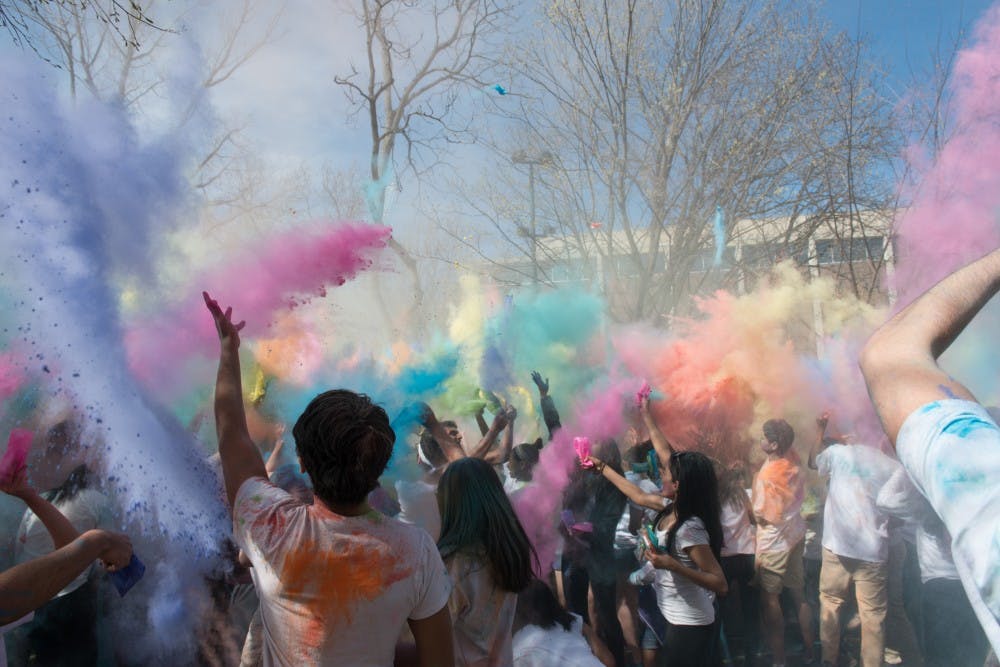This Friday on College Green, the Class Boards of all four years are coming together to host a celebration of color in honor of Holi. Prepare yourself, because there’s probably going to be a number of cute photos captioned “Holi Moli!” or something of the like. The event makes the Hindu holiday accessible to all and gives students the opportunity to experience a rich culture that they may not be familiar with.
The intention of the four Class Boards co–hosting the event with the Hindu Jain Association is "promoting intercultural exchange across campus and fostering community," says Jessica Lim (C '19), Vice President of Internal Affairs. "We've continued hosting it as a tradition because it is an event that has been able to yield a lot of students, in terms of campus turn out and with the performing arts groups that we invited, we're hoping to also promote cultural inclusion as well through the event." And the reason there's such a great turn out is simple: it's fun. Vanessa Wandayeh (C '20), Vice President of Finance, describes it as "definitely a major highlight in my freshman year and something I'm really excited to do again."
Also called the “festival of colors,” Holi is an Indian and Nepali festival celebrating the end of winter and the arrival of spring. The actual date this year was Mar. 2, over a month ago, but with the recent mood swings of the weather, it will be much more enjoyable now. But apart from demarcating the shift in season, Holi also holds even more layers of meaning, symbolizing the triumph of good over evil and the thanks–giving of a good harvest.
Some say that the beginning of the tradition of throwing pigment started with the legend of the god Krishna. Poisoned by the she–demon Putana by her breast milk, his skin turned a deep dark blue. Because of this, he grew extremely self–conscious, despairing over whether the fair–skinned Radha and other girls would like him. Tired of his complaints, his mother advised him to approach Radha and color her face in whatever color he pleased. After that, the two coupled up and since then, the throwing of the color became a representation of the playful coloring of Radha’s face. The colors are a commemoration of their divine love.
Today, during Holi, the streets and homes are doused in almost every color imaginable, as it will be on Friday. In addition to the colored powder, there will also be performances from Masti, Raas, Dhamaka, Thillana, Strictly Funk, and the West Philly Swingers. Just like the festival itself, the colors aren’t here just for an aesthetic: they hold significant meaning.
Throw red powder and you’re exuding energy, excitement, passion, and auspiciousness. White and you’re purifying and renouncing. Yellow and you’re radiating prosperity, health, and peace. Saffron, strength and piety; blue, faith and spiritual growth; purple, magic and mystery; green, new beginnings and positivity.
These colors of Holi, while beautiful, also serve a different purpose. Like many holidays, Holi brings people together. On this one day, the old and the young, the rich and the poor come together to laugh, dance, feast, and commemorate what they all commonly value—love, life, and color. We throw color at each other—yes, because it’s fun, but also because it’s a sense of unity. Even thousands of miles away from where the festival first originated, the meaning is still there.

